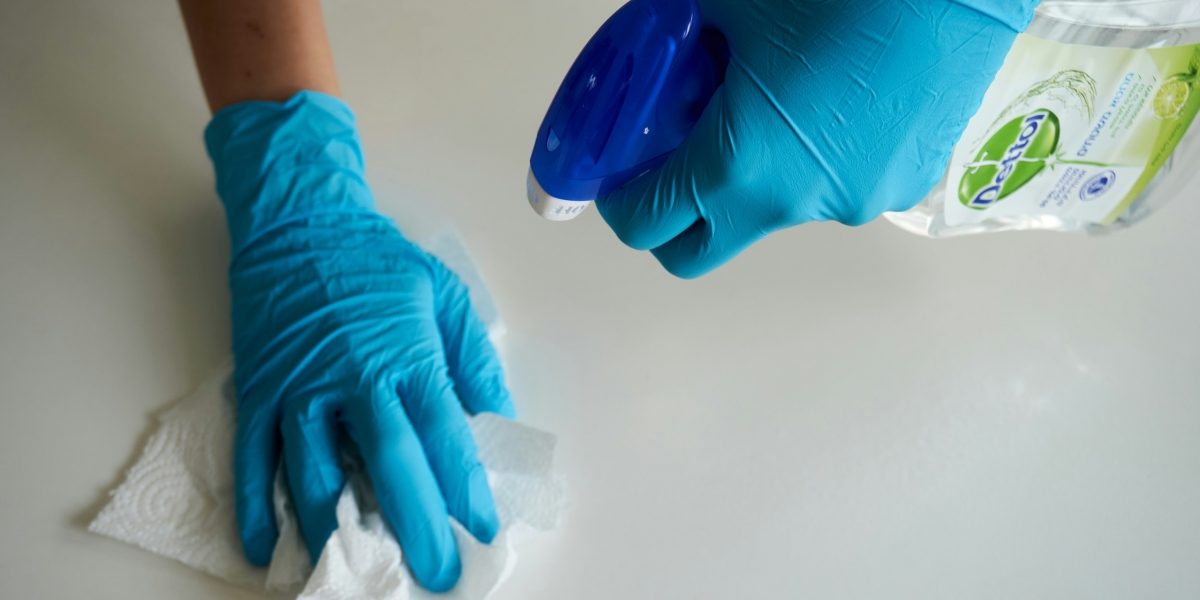By: Oliver Scott
Maintaining cleanliness plays a crucial role in promoting both health and aesthetic appeal. Clean spaces create a welcoming environment and help prevent the spread of germs and allergens. Yet, achieving long-lasting cleanliness can feel like a constant challenge without the right methods. By using proven, efficient techniques, it is possible to save time, reduce costs, and keep any environment in top condition. Leaders from Royal Property Management, a top-tier provider of janitorial services in New York and New Jersey, explore tested strategies to make cleanliness simpler and more sustainable.
Understanding the Principles of Cleanliness
Cleanliness is a foundational principle that impacts physical health, mental clarity, and overall productivity. A truly clean environment extends beyond removing visible dirt to fostering a sense of order and balance that directly affects how people feel and function. By understanding its key principles, individuals can create spaces that are both inviting and enduringly clean.
“A clean environment directly influences mental well-being,” says Joseph Miller from Royal Property Management. “Cluttered or messy spaces often cause stress due to overstimulation or the perception of incomplete tasks. When a commercial or rental space is unclean, it can lead to poor reviews and client attrition.”
Conversely, clean spaces promote calm and foster focus. Organizing a desk or tidying up a living room can provide a psychological reset, allowing individuals to concentrate on what truly matters. Living or working in orderly surroundings can help reduce anxiety by offering a sense of control. Cleanliness serves as the foundation for a healthier, more productive mindset.
Hygiene is essential for maintaining cleanliness over time, as it goes beyond tidying and addresses unseen contaminants like bacteria and viruses. Proper hygiene practices, such as regular handwashing or sanitizing high-touch surfaces, prevent the accumulation of harmful germs, ensuring a safer environment. These routines create a layer of protection, reducing the chance of illness and reinforcing the cleanliness of shared or personal spaces.
Consistent hygiene habits extend the lifespan of items and surfaces. Wiping down appliances prevents grime from building up, making them last longer and work more efficiently. Laundering linens and cleaning air filters reduce allergens, keeping the environment fresh and healthy. Hygiene is the backbone of sustainable cleanliness, ensuring that spaces remain both functional and pleasant over time.
Essential Tools and Supplies for Immaculate Environments
Creating and maintaining a clean space requires the right combination of products and tools. While effort plays a big role, the quality of supplies used can make or break the results. Selecting items that are both effective and efficient can simplify the process, save time, and ensure long-lasting cleanliness.
Using well-chosen products helps tackle dirt and bacteria while protecting surfaces. Multi-surface cleaning agents are versatile and ideal for everyday cleaning, while specialized products, such as stainless-steel polish or grout cleaners, target specific challenges. Eco-friendly options offer the same effectiveness without harsh chemicals, benefiting both the environment and households with children or pets.
Many brands now carry labels indicating non-toxic and environmentally responsible manufacturing standards, making them easier to identify. For disinfection, alcohol-based sprays or hydrogen peroxide solutions sanitize high-touch areas like door handles and countertops. Reusable cleaning wipes, microfiber cloths, and natural soaps also offer excellent alternatives to disposable products, minimizing waste while maintaining effectiveness.
The goal is to find reliable cleaners that work efficiently without causing damage to surfaces or leaving behind residues. Having the right tools reduces effort and improves results when maintaining cleanliness. Each space often requires specific equipment, so being selective helps achieve the best outcome. A vacuum cleaner suited to the surface type is important.
Upright models work well for carpets, while canister vacuums with hard floor attachments handle wood or tile more effectively. Features like HEPA filters are recommended for reducing allergens.
Mops vary in design and purpose. Flat microfiber mops are lightweight and easy to use, perfect for quick cleanups. Steam mops offer deep cleaning by removing grime and sanitizing without chemicals, making them a top choice for tiled or sealed hardwood floors. For smaller or more detailed tasks, having a range of brushes makes a difference.
Stiff-bristled brushes are essential for scrubbing stubborn stains, while softer bristles avoid scratching fragile materials. Durable gloves, buckets, and squeegees round out a comprehensive toolkit. By investing in the right tools, maintaining cleanliness becomes easier and more manageable, no matter what the size or nature of the task.
Practical Cleaning Methods for Long-Lasting Tidiness
Notes Mike Heimann from Royal Property Management notes, “Cleanliness that lasts begins with the right techniques. It is about completing tasks in a consistent, effective manner that prevents dirt and clutter from quickly returning.”
By focusing on achievable methods and addressing the areas that matter most, anyone can create an environment that retains its freshness for longer periods. Floors are the foundation of any clean space, and keeping them spotless requires targeted techniques suited to the material. Hard floors, such as wood or tile, benefit from regular sweeping or vacuuming to remove dust and grit that could cause scratches.
Following up with a damp microfiber mop ensures a deeper clean while avoiding excessive water, which can damage surfaces over time. For stubborn spots, a dedicated floor cleaner prevents buildup without causing discoloration or wear. Carpeted floors demand a slightly different approach. Frequent vacuuming minimizes allergens and prevents dirt from getting ground into fibers.
Deep cleaning with a steam cleaner every six to twelve months helps restore carpets and remove embedded grime. Spot treatments are essential for spills; blotting the area with a clean cloth and using a carpet-safe cleanser prevents stains from setting. Countertops and other surfaces experience the most use, making them prone to wear and dirt. Choosing the right cleanser is crucial in protecting these areas while maintaining their shine. For natural stone countertops, using a pH-neutral cleaner safeguards against etching or discoloration.
Laminate countertops require mild dish soap solutions for everyday messes. For wooden surfaces, a nontoxic wood cleaner maintains the material’s finish and integrity. Surfaces touched frequently, like door handles, light switches, and remote controls, serve as hotspots for germs. Consistent disinfection is key to preventing the spread of bacteria and viruses.
Cleaning becomes easier when clutter is under control. Decluttering involves sorting through belongings and deciding what to keep, donate, or discard. Organized storage solutions ensure that remaining items have designated places. Implementing small habits, like putting things away at the end of the day, helps spaces stay tidy without requiring a major cleanup effort.
Sustaining Cleanliness Over Time
“Maintaining a clean environment requires establishing habits that are both practical and sustainable. A cleaning schedule helps keep tasks manageable and prevents chores from piling up,” says a Royal Property Management executive.
Cleanliness will increasingly focus on sustainability and efficiency. Innovations in eco-friendly products and smart cleaning technology will enhance effectiveness while reducing environmental impact. As awareness of health and hygiene grows, the emphasis on long-lasting cleanliness will continue to shape better living and working environments. By adopting these proven techniques and tools, individuals can contribute to cleaner, healthier spaces for generations to come.
Published by Stephanie M.

















